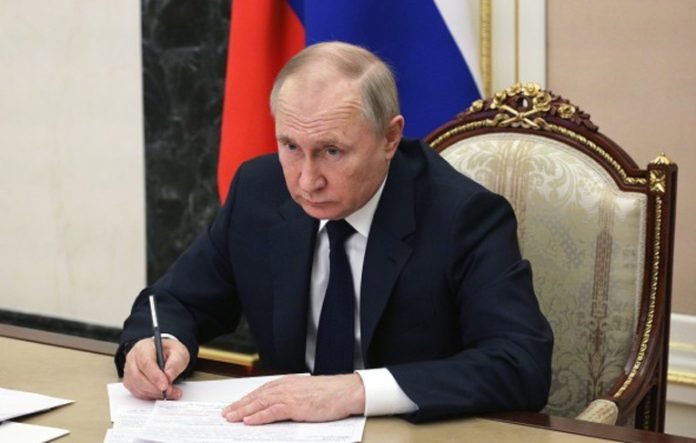Russia is reportedly planning to invite 1 million Indian workers in 2025 to fill its intensifying labor shortage, a crisis accelerated by the ongoing war in Ukraine. Media reports suggest this move is aimed primarily at supplementing the construction, industrial, and infrastructure sectors, which are grappling with severe human resource deficits. As the conflict drags on, Russia’s dwindling manpower—largely redirected toward military needs—has forced the Kremlin to turn to foreign labor markets, with India emerging as a prime source.
Why Russia Is Desperately Seeking Foreign Labor
The labor crisis in Russia is not speculative—it is deepening and structural. With hundreds of thousands of Russian men either enlisted, dead, wounded, or fleeing conscription, the civilian labor pool has sharply diminished. This manpower vacuum is particularly affecting:
Urban construction projects, especially in major cities like Moscow, St. Petersburg, and Novosibirsk.
Industrial plants, including oil refineries, steel manufacturing units, and defense production facilities.
Large-scale infrastructure ventures, such as roadways, bridges, and utility networks.
According to official Russian estimates, the shortfall exceeds 5 million workers, and continues to grow. While workers from Central Asia—Uzbekistan, Kyrgyzstan, and Tajikistan—have historically filled these gaps, the demand now far outpaces their supply. Hence, the Kremlin is setting its sights on India, a country with a large, skilled, and mobile labor force.
The 2025 India-Russia Labor Pipeline: What We Know So Far
Reports suggest that the Russian government is preparing for a formal bilateral labor agreement with India. The framework under consideration would streamline the process of visas, housing, healthcare access, and legal protections for Indian laborers. Recruitment is expected to begin in early 2025, with job roles centered on:
Bricklaying, masonry, and cement work
Industrial machinery operation
Plumbing, electrical, and welding trades
Road construction and tunneling
Railway infrastructure and logistics handling
The Indian laborers are likely to be deployed in regions like Siberia, the Far East, and remote industrial zones, where local manpower is scarce and infrastructure projects are rapidly expanding.
Incentives for Indian Workers—But at What Cost?
The Russian offer comes with a tempting package:
Salaries ranging from ₹90,000 to ₹1.2 lakh/month
Free or subsidized accommodation
Work visas valid for 1 to 3 years
Return airfare every 12 months
Onsite health facilities
However, beneath this promise of better pay lies a complex geopolitical and ethical dilemma. Russia is, in essence, outsourcing its economic engine to foreign laborers while many of its own citizens are fighting or fleeing the war. For India, the question becomes whether this opportunity is a lifeline for its unemployed youth, or an exploitative setup with high human and reputational risks.
Key Concerns and Potential Red Flags
Despite the potential economic benefits, the move raises serious concerns:
1. War-Zone Proximity
Many of Russia’s labor shortages are in areas indirectly affected by the war—either through militarization of industries or the reallocation of resources for defense infrastructure. Indian workers could unintentionally become pawns in a war economy.
2. Worker Safety and Legal Ambiguity
Russia’s human rights record, especially for foreign workers, is far from reassuring. Cases of unpaid wages, poor living conditions, arbitrary detentions, and lack of medical care have been documented by global labor watchdogs.
3. Ethical Implications for India
Sending its citizens to fill labor gaps in a war-waging state could backfire diplomatically. India may be seen as supporting Russia’s wartime economy, even if indirectly.
4. Cultural and Language Barriers
Russian work environments are linguistically and culturally challenging, particularly for low-wage workers. Miscommunication could lead to safety issues and unfair labor practices.
5. Job Trap Risk
Contracts with limited exit clauses, poor grievance redressal mechanisms, and dependence on a foreign legal system could place Indian workers in vulnerable positions, especially in remote Russian towns.
India’s Silent Diplomacy: No Official Word Yet
The Indian Ministry of External Affairs has neither confirmed nor denied Russia’s recruitment plans. However, sources in the labor ministry hint that informal communications have begun between Moscow and New Delhi. If formalized, the move would be India’s largest labor export to a non-Gulf country in decades.
Labor unions, human rights activists, and strategic experts are urging caution and transparency before any large-scale deployment is authorized. India’s priority must be to safeguard the dignity, safety, and rights of its citizens abroad.
A Look at Precedents: How Other Countries Handle Similar Deals
Historically, labor-exporting nations have insisted on strict bilateral agreements, monitored employment conditions, and demanded labor attachés be posted at embassies to oversee welfare. Countries like the Philippines and Bangladesh offer robust models India can learn from.
If India agrees to Russia’s proposal, it must institutionalize a protective framework—with insurance, grievance redressals, and emergency repatriation plans. Anything less could lead to a humanitarian and diplomatic fiasco.
Who Will Actually Benefit?
While the move may alleviate India’s unemployment figures temporarily, most of the benefits seem tilted in Russia’s favor:
Fills their workforce without conscripting more locals
Boosts productivity amid wartime industrial needs
Sustains their infrastructure momentum for strategic gain
For Indian workers, long-term safety, social mobility, and legal protection remain uncertain.
Conclusion: A Strategic Move or a Risky Gamble?
Russia’s call for Indian labor in 2025 is not just a workforce appeal—it’s a strategic maneuver in a time of war. India must tread carefully. While economic incentives exist, the human cost, potential exploitation, and geopolitical optics demand rigorous scrutiny.
This decision, if executed without transparency and safeguards, could go down as a costly misstep in India’s international labor diplomacy. On the other hand, if negotiated prudently, it may open doors to structured labor migration, benefitting both nations—albeit unequally.
As things stand, caution, not celebration, is the need of the hour.
















